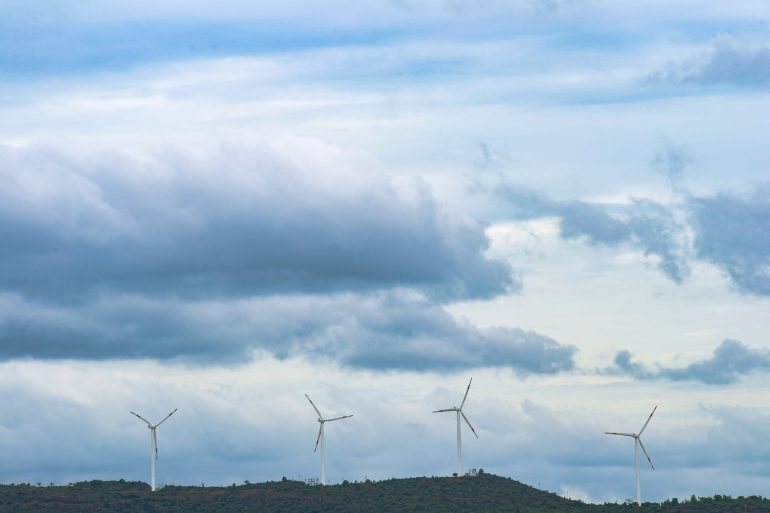
All energy sources have an impact on the atmosphere in some way. By most indicators, fossil fuels—coal, oil, and natural gas—do far more harm than renewable energy sources, including air and water pollution, public health damage, species and habitat destruction, water use, land use, and global warming emissions.
Renewable energy sources like wind, solar, geothermal, biomass, and hydropower all have environmental impacts, some of which are significant.
Wind energy is one of the cleanest and most environmentally friendly ways to generate electricity, since it generates no toxic waste or greenhouse gas emissions. Wind is also plentiful, inexhaustible, and inexpensive, making it a feasible and large-scale fossil fuel substitute.
Rural landowners, producers, and communities benefit from wind power because it generates consistent and substantial revenue. Wind turbines take up very little space, allowing land to be used for farming, homes, and other purposes.
The wind allows two or three aerodynamic, propeller-like blades on a wind turbine to spin around a rotor (in most cases) (thus capturing the winds kinetic energy). A shaft is spinning as a result of this operation, and an additional motor aids in increasing the speed. This turning aids the development of an electric current by a generator.
To take advantage of the stronger wind speeds at higher altitudes, wind turbines usually rise 100 feet or more into the air. Since these turbines are tall, the area they occupy is mostly high above us, resulting in a relatively limited ground area. Wind turbines may be left alone or used for farming in the area around them.
Wind energy is called renewable energy because it emits no carbon dioxide. Clean energy refers to methods of producing electricity that emit no or very little carbon dioxide, whereas green energy refers to renewable energy sources (solar, wind) that emit no carbon dioxide during service.
In the forecast period of 2020-2025, Pakistan’s wind energy market is projected to expand at a CAGR of more than 5%. Supportive government policies and attempts to meet power demand with renewables to reduce reliance on fossil fuels are expected to be major contributors to the market’s growth.
Wind energy is beneficial to us for the same reasons that it is necessary to sustain life. It saves money, water, and, most significantly, it has a lower environmental impact than its non-renewable counterparts. Wind energy has the potential to end the energy crisis because it is not reliant on oil and hence is unaffected by price fluctuations. It is both clean and environmentally friendly, and it is a cutting-edge technology that will aid us in preventing future environmental disasters. China, Japan, and India, for example, have made substantial investments in wind energy technologies. There is an opportunity for entrepreneurs and investors in Pakistan to invest in Wind Energy in the midst of energy shortfall.
